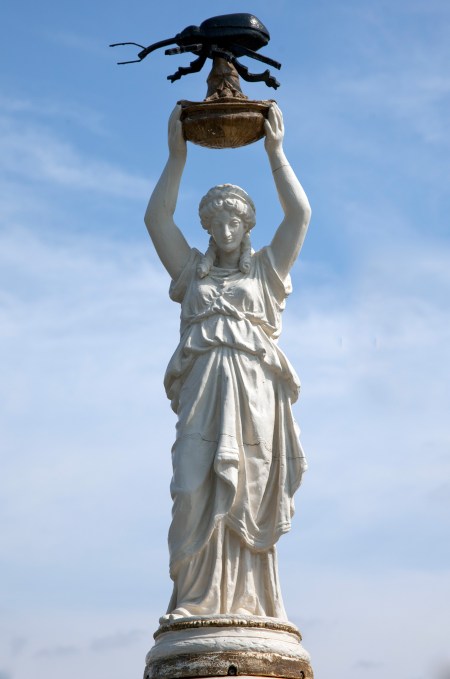The boll weevil is not one of nature’s prettiest bugs. In fact, the elephant-snouted beetle, which feeds on cotton bulbs, is downright ugly. But in Enterprise, Alabama, the boll weevil has been honored with its own monument.
The town erected a Greek-inspired statue—now prominently featuring a 50-pound version of the bug on top (it was added later)—on December 11, 1919, with the monument’s plaque reading: “In profound appreciation of the Boll Weevil and what is has done as the Herald of Prosperity, this monument was erected by the Citizens of Enterprise, Coffee County, Alabama.”

Smithsonian recently ventured to Enterprise in search of an answer to the town’s bizarre bug-worship. Because for all intents and purposes, the boll weevil has been anything but a friend to U.S. farmers, costing them $23 billion in crop loss.
Particularly hard hit has been cotton, which was a major source of income to the U.S. south in the late 19th and early 20th centuries.
So how did the boll weevil become the “herald of prosperity”? Because Enterprise farmers smartly decided to stop planting all cotton in the mid 1910s, and diversify, to crops such as peanuts. At the peak of the bug’s destruction in the South in 1919, Coffee County had became the country’s largest peanut producer. Farmers also added other crops like potatoes, sugar cane, and tobacco.
While the rest of the South was spending millions battling the boll weevil, trying to recoup lost crops, Enterprise found financial success in its change of agricultural focus. And at least some of the credit goes to the tiny interloper.
This article was featured in the InsideHook newsletter. Sign up now.























